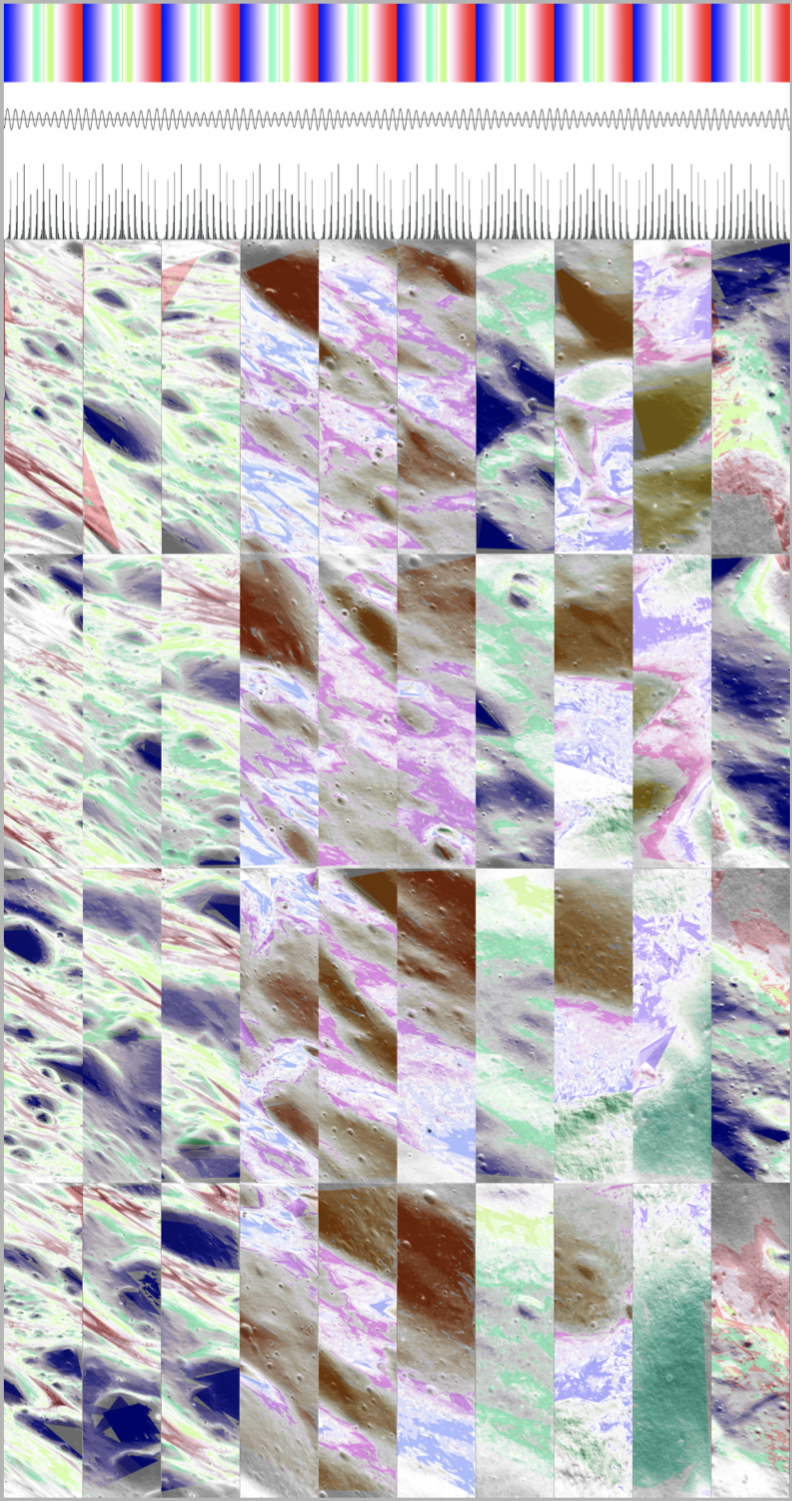Adder (2012-13)
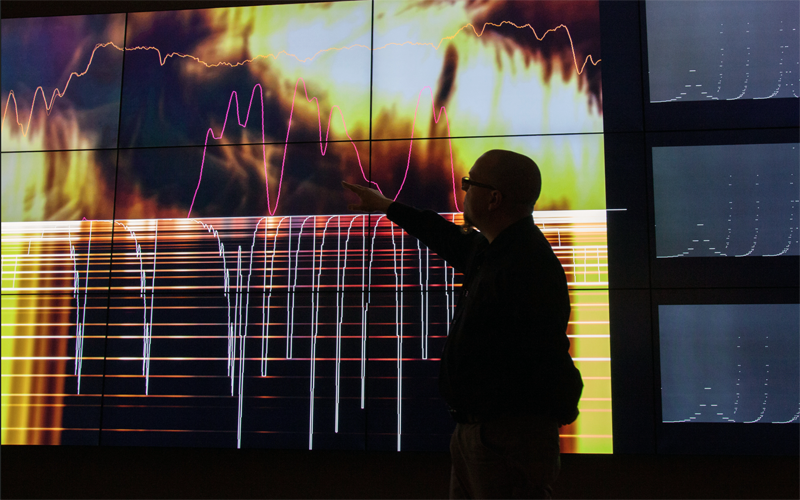
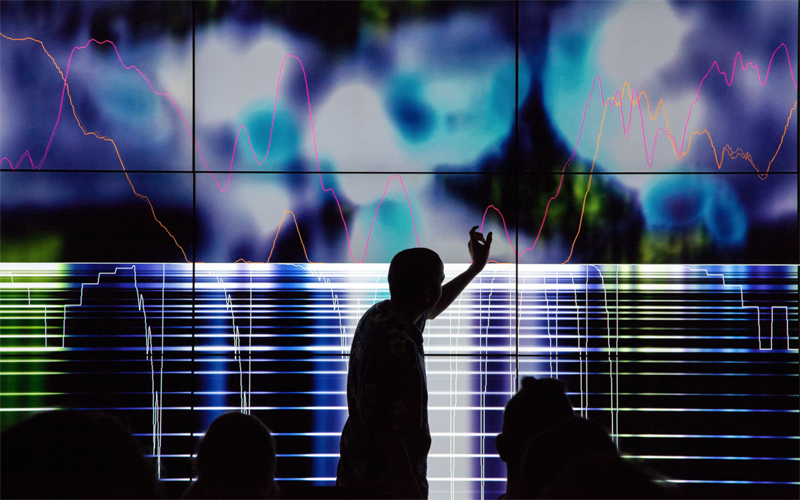
Adder is a system for synthesizing sound from visual image data, scanned during composition/performance. Adder
relies on an additive synthesis procedure where color values are extracted from pixel rows and used to set the
volumes and spatial locations for banks of harmonic oscillators each tuned to a specific pitch. Red and blue values
correspond to left-right panning, while green values center the sound in the stereo field. With the screen interface,
magenta and orange line-graphs each display one channel of spatial activity (left and right in the stereo field),
with the height of the line corresponding to the pixel’s influence on the amplitude of the available oscillators.
At the bottom of the display is a white graph that shows the tuning for each oscillator overlaid with a real-time
spectral analysis of the audio output. While many timbres are possible, the selected character for the sound of
Adder is organ-like.


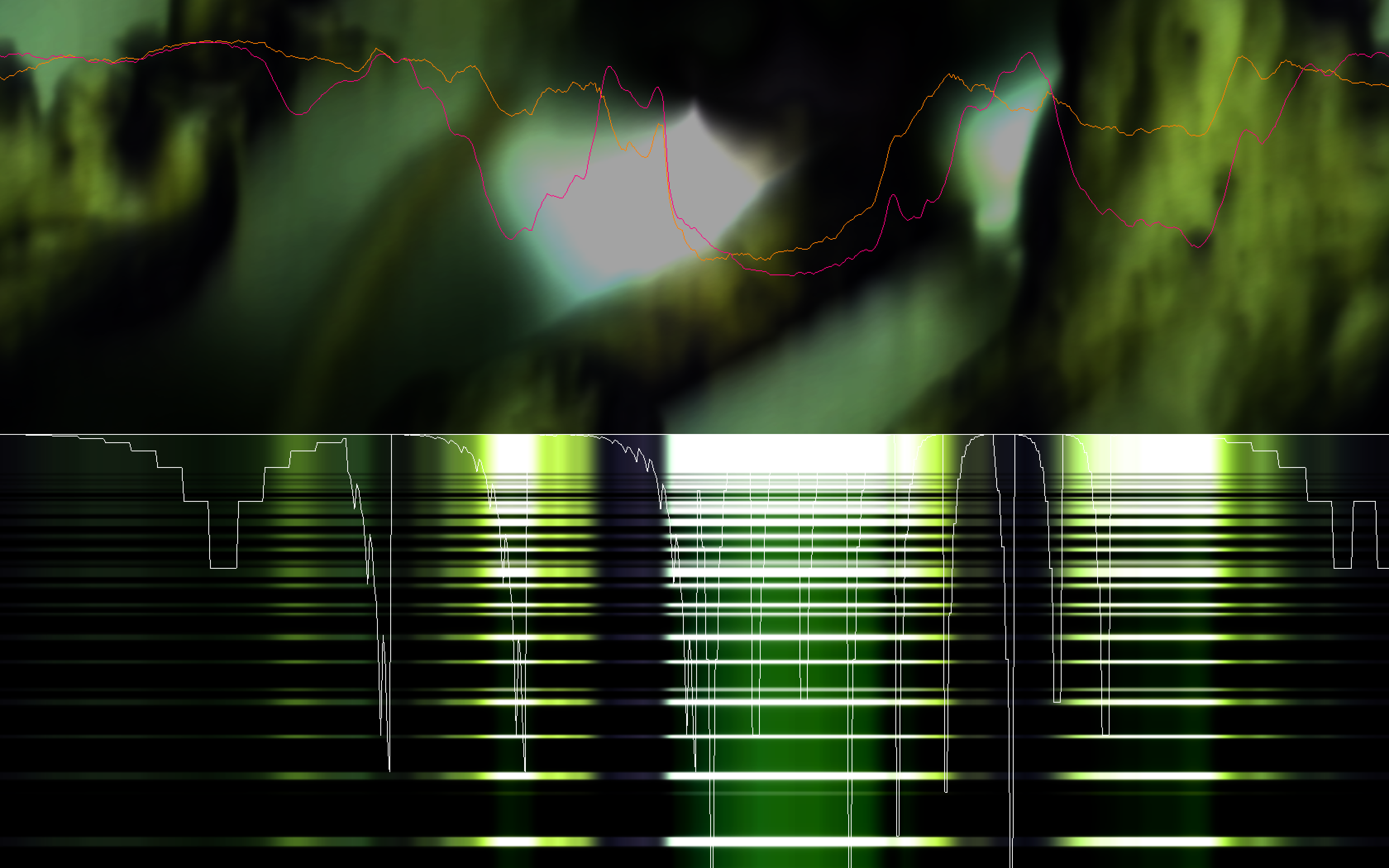
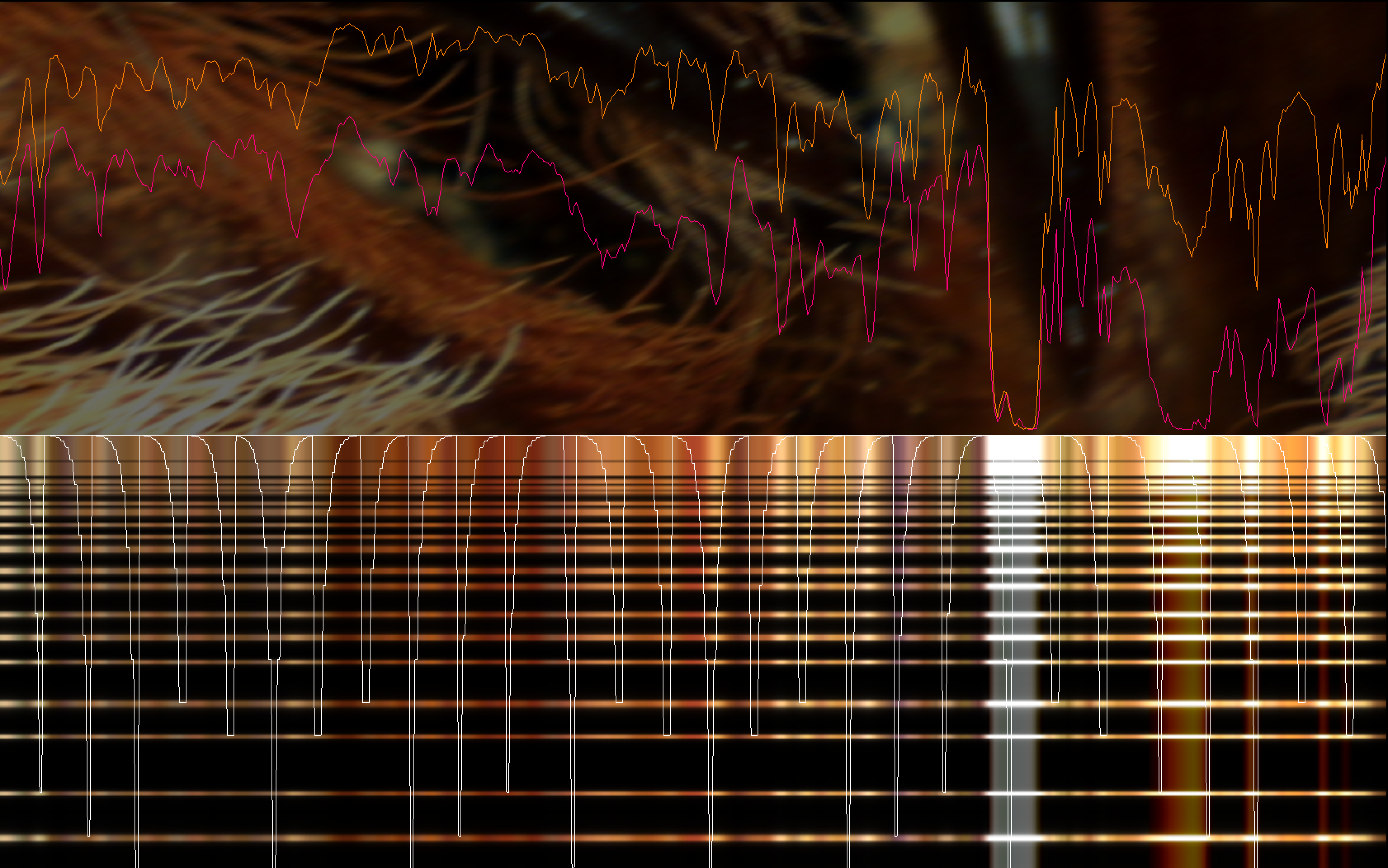
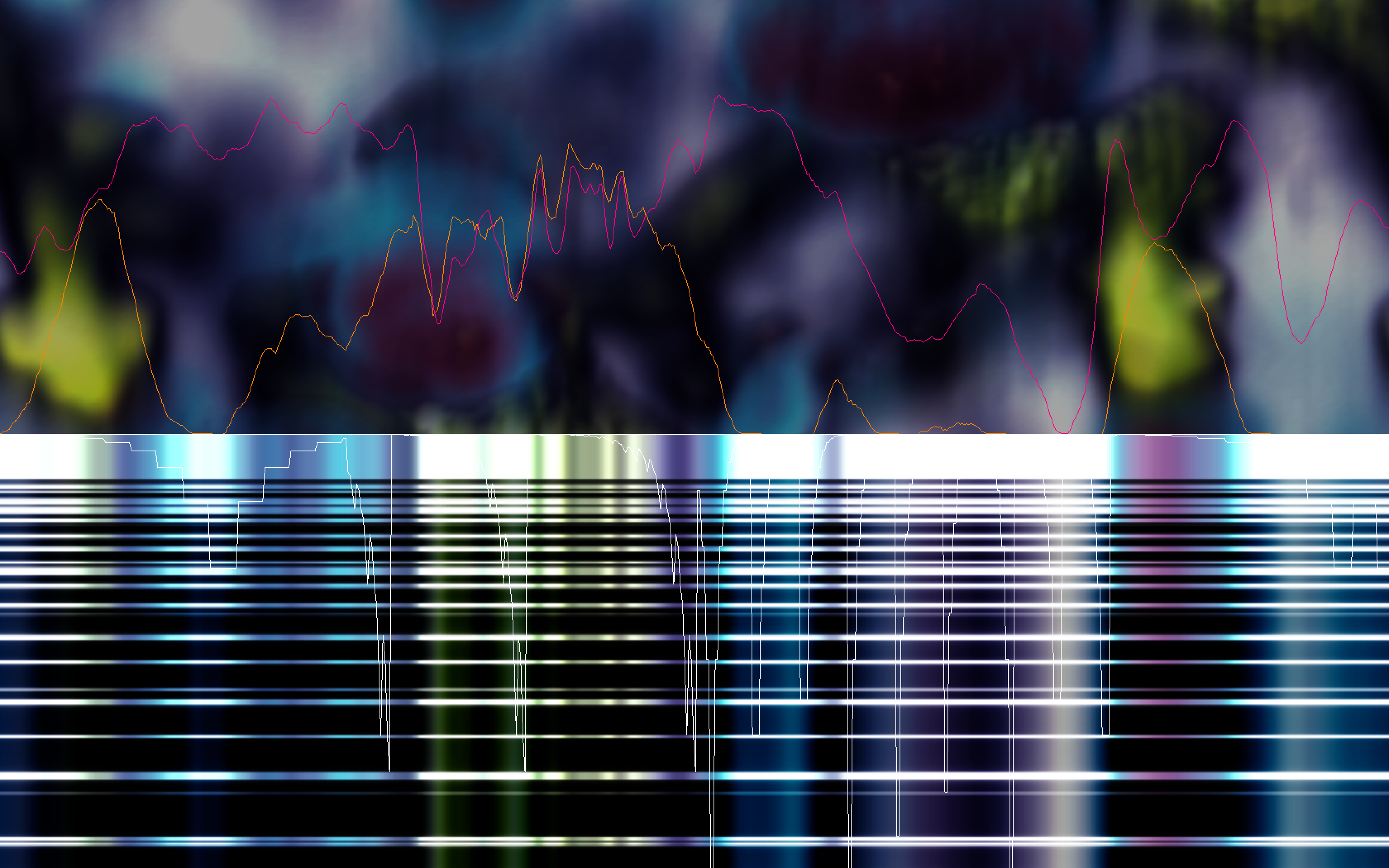

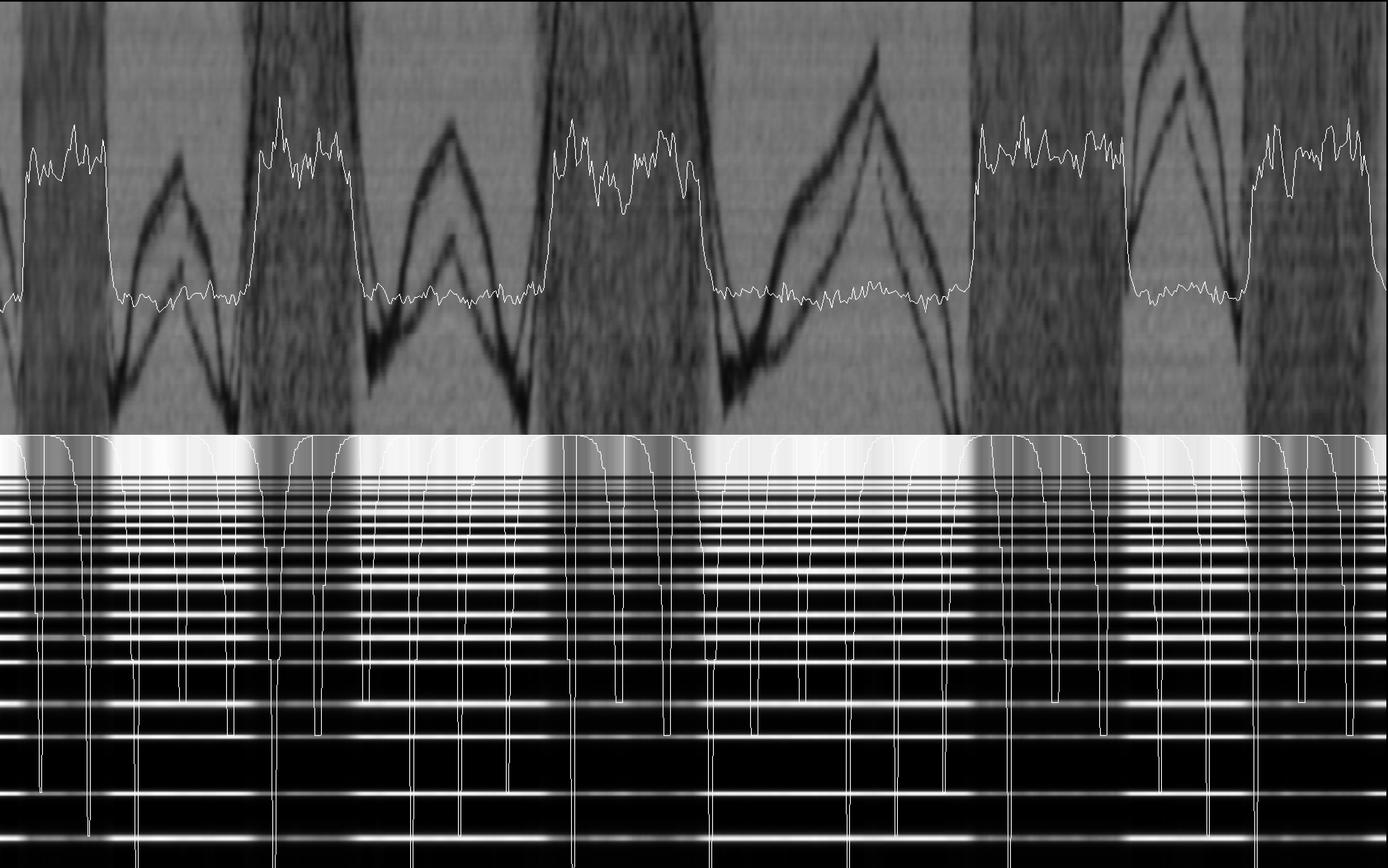

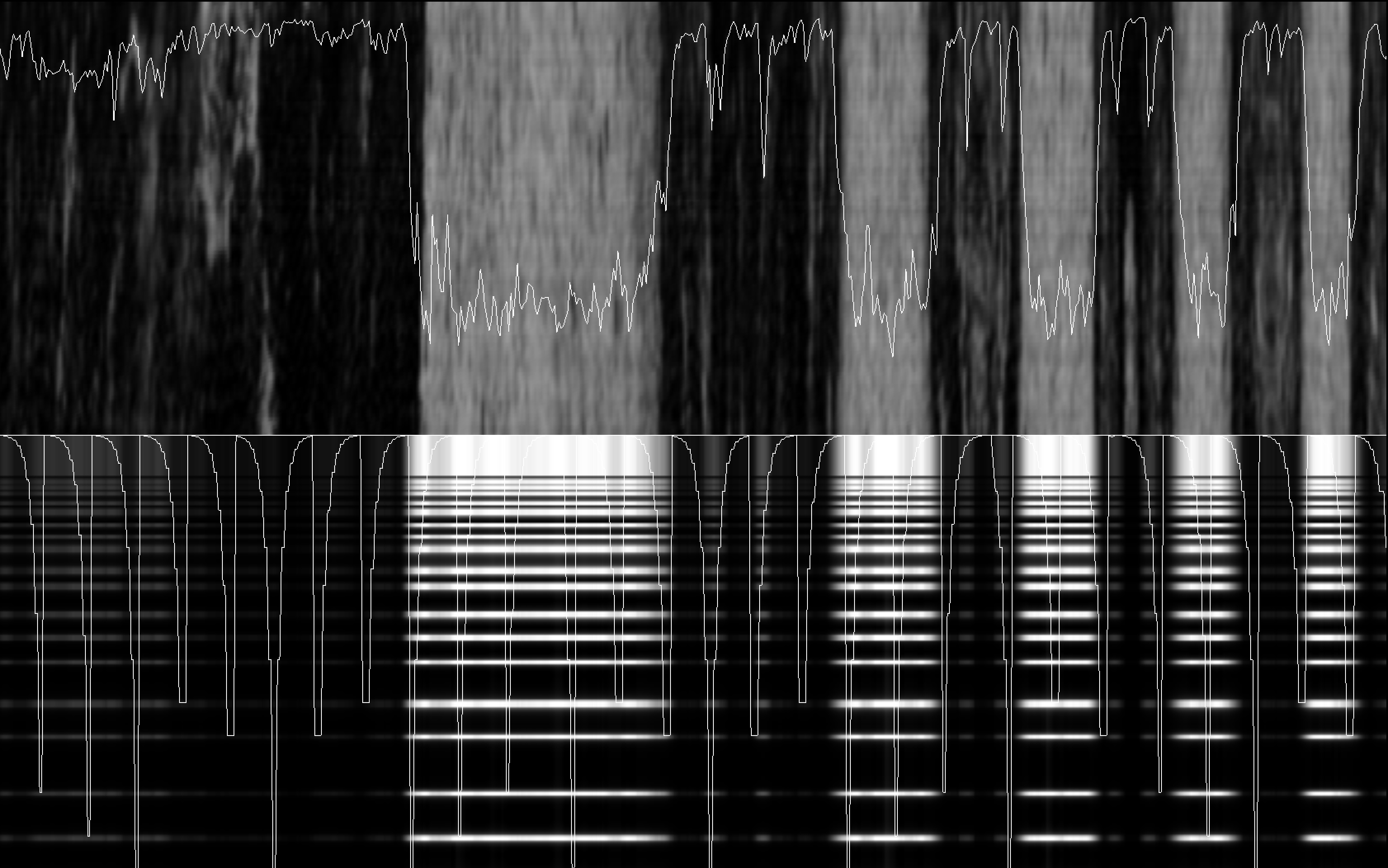



Adder was used to create Iapetus Trace, which utilizes prepared photographs of Saturn’s moon
Iapetus, taken by the NASA spacecraft Cassini. The graphic score shows the moon’s
topography remapped with color gradients that enable the surface illumination to become
audible through panning cues (sonifying topography). Iapetus Trace was on listen at the Deep
Space exhibition in July-August 2012 at François Ghebaly Gallery in Los Angeles. Further,
Adder has been used in live performance contexts and for talks on Graphic Sound.
